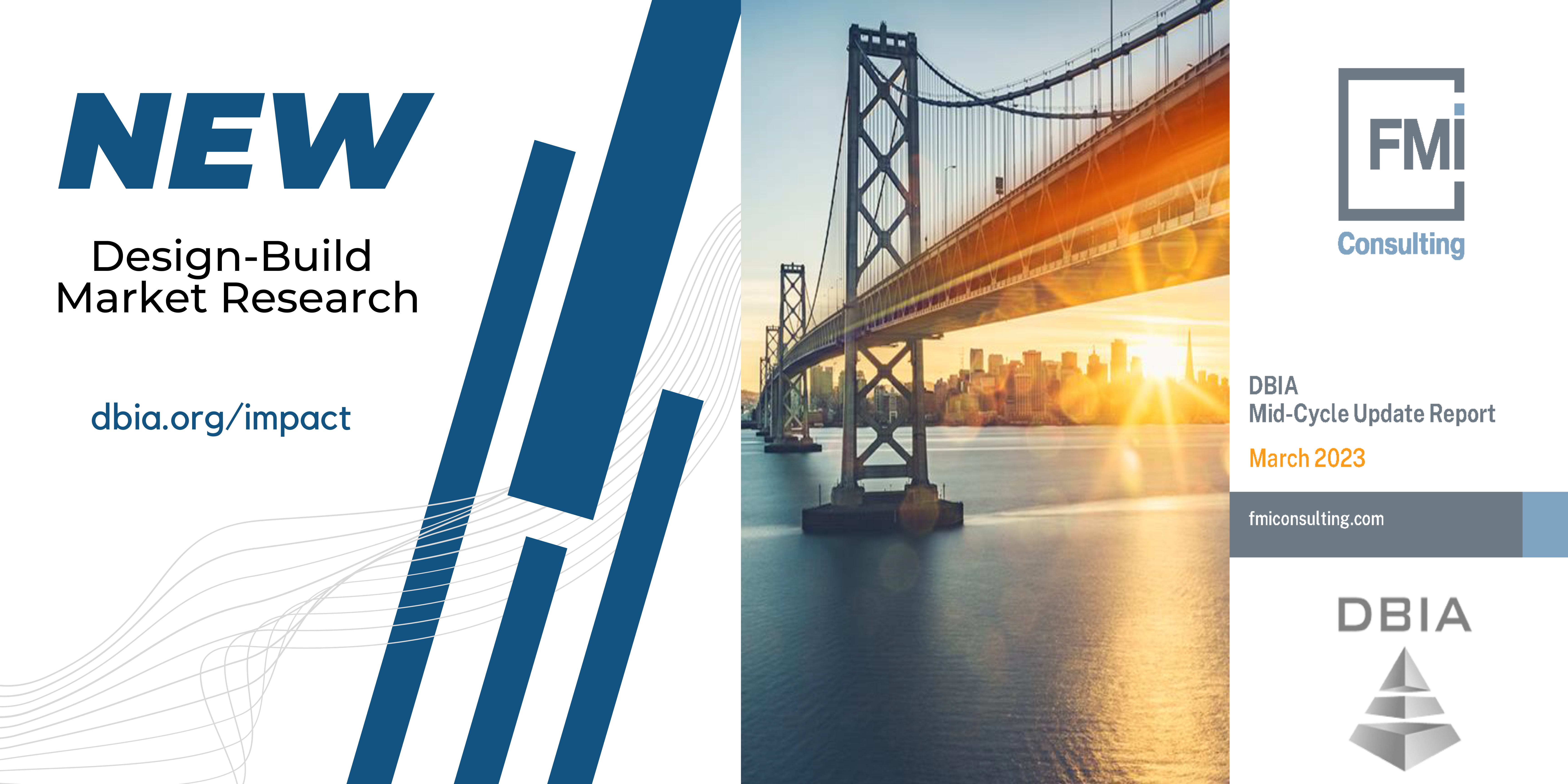
Design-build market research by FMI Consulting forecasts continued design-build growth over the next three years, despite recent industry challenges and market volatility. Analysts project design-build will account for 47% of construction spending and 22.5% growth in total design-build spending by 2026.
“With the positive projections reported by FMI in this update, design-build will be integral to keeping our nation’s infrastructure projects moving forward,” said Design-Build Institute of America (DBIA) Executive Director/CEO Lisa Washington, CAE.
Building on FMI’s 2021 design-build utilization report, the new survey reexamined the industry following the challenges of the previous three years, including the COVID-19 pandemic, labor shortages and supply chain issues. The flexibility and collaboration inherent in design-build uniquely position the project delivery method to resist stagnation, and respondents overwhelmingly indicated that design-build project delivery – regardless of procurement approach – is better able to manage cost uncertainty. The projected decrease in design-bid-build alongside the growth in design-build demonstrates the industry is moving toward collaboration as a norm and an expectation.
Washington added, “Over the last three years, we’ve seen design-build withstand the uncertainty of a volatile market and continue to demonstrate optimal results. It is a delivery method that performs, even in the face of adversity. In fact, during times of crisis, the flexibility of design-build has helped communities recover more quickly and cost-effectively by delivering projects on time and on budget.”
FMI found that design-build continues to see usage in all sectors and regions of the United States, and the industry has witnessed extraordinary project outcomes and innovation across all sectors. The FMI Design-Build Market research report provides detailed geographic and sector data, including market analysis and projections. Here are just a few highlights:
Market Growth Continues
- Design-build is anticipated to continue to gain market share representing over 47% of spending in 2026.
- Total growth in design-build construction spending is projected to be 22.5% from 2022 to 2026. Design-build is anticipated to account for $1.9 trillion of construction spending in the assessed segments over the 2022 – 2026 forecast period.
- The South Atlantic, Pacific and West South Central census divisions are anticipated to represent the largest volume of design-build spending over the 2022 – 2026 period.
- Highway/street, educational and manufacturing are anticipated to hold the greatest share of design-build spending through 2026.
Design-Build During Challenging Times
- The majority of respondents (83%) indicated design-build can help them with supply chain issues over other delivery methods, with 61% of respondents utilizing early procurement and dynamic scheduling to combat supply chain challenges.
- Over three-quarters of survey respondents believe that design-build facilitates greater utilization of prefabrication on projects.
- Competitive Best Value (CBV), Progressive Design-Build (PDB) and Qualifications-Based Selection (QBS) account for a majority of the procurement approaches. Respondents indicated CBV, PDB and QBS were better able to manage cost uncertainty in a volatile market environment than Low Bid. PDB was at the top with the majority of respondents indicating it is either moderately (31%), very (37%) or extremely (15%) well-suited to managing cost uncertainty.
